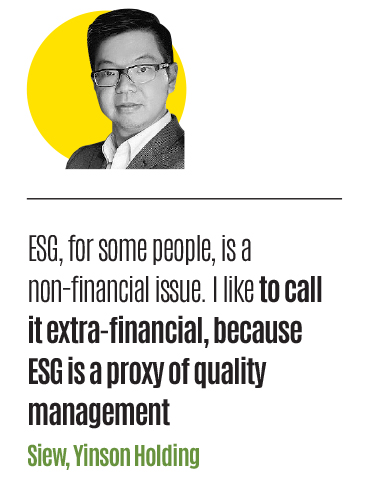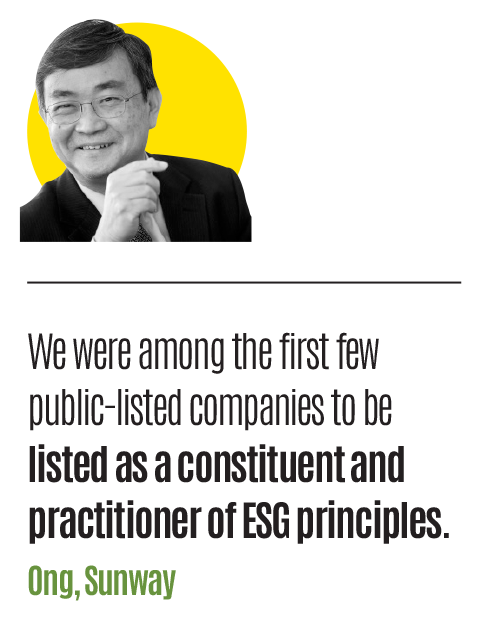
This article first appeared in The Edge Malaysia Weekly on April 17, 2023 - April 23, 2023
In recent years, companies have been promoting their environmental, social and governance (ESG) efforts in marketing campaigns. Existing corporate social responsibility (CSR) activities such as beach clean-ups, tree planting and charitable donations are, however, also increasingly being marketed as ESG initiatives.
This has led some to question if ESG and CSR are the same thing, or if claiming CSR activity as ESG is a form of greenwashing.
According to the Association of Corporate Citizenship Professionals (ACCP), CSR emerged in the late 1800s when businessman and philanthropist Andrew Carnegie challenged wealthy people to support social causes through his book, Gospel of Wealth.
The concept gained further prominence when American economist Howard Bowen was named the father of CSR after highlighting the responsibility of corporations to society in his 1953 book, Social Responsibilities of the Businessman.
However, the concept only took off in the 1970s owing to the popularisation of the idea of a social contract. As the ACCP describes it, since a business requires public consent to operate, the social contract emphasises the obligation that a business has to serve the needs of society.
ESG is not philanthropy
The concept of ESG that has gained popularity in recent years, however, goes further than CSR in emphasising the responsibility of businesses.
The definition of CSR at that time was purely related to corporate philanthropy, says Dr Renard Siew, head of corporate sustainability at Yinson Holdings Bhd. For instance, CSR would mean the amount of donations a company gave to charity.
Siew says this changed with John Elkington, whom he describes as the father of corporate sustainability.
“He came in to redefine what corporate sustainability meant. The concept of the triple bottom line focuses not just on profits as the ultimate goal. It also [looks at] how we take care of people and our planet, and tries to balance these three focuses,” he highlights.
The concept of ESG dates back to the 2006 United Nations Principles for Responsible Investment, which required ESG criteria to be included in the financial evaluation of companies.
Phang Oy Cheng, head of sustainability advisory services at KPMG Malaysia, explains that the term became popular over the past five years with the introduction of the Task Force on Climate-related Financial Disclosures (TCFD) and more frequent disasters caused by climate change.
“[When these events occurred], the financial sector didn’t know where their exposures were and the readiness of the companies that they lend to to sustain their business. That’s when the push for more granular key performance indicators [happened], with more emphasis on managing non-financial risks, hence the term ‘ESG’,” she says. “ESG came out as more of a financial sector requirement, and it still is very much so.”
Essentially, ESG is now seen as integral to risk management, and not something additional to the business.
“ESG, for some people, is a non-financial issue. I like to call it extra-financial, because ESG is a proxy of quality management,” says Siew.
“It’s how well an organisation does, not just from a profitability standpoint but also on the environmental and social side. To a certain extent, in this day and age, we have matured so much that we can quantify and say environmental risks could potentially impact the bottom line.”
For example, severe floods disrupt the supply chain because routes for transportation and delivery of goods are affected.
“ESG is more business-centric; it’s about how internal operations are run and how [organisations] quantify risk opportunities within the ESG space. CSR is like an extension of what a business can do to create impact,” says Siew.
CSR also evolving
CSR is parked under the “social” umbrella of ESG, says Phang. However, instead of just marketing their CSR activities, companies are now required to declare their targets and the results of these activities in their sustainability report.
For example, instead of just promoting its beach clean-up, a company has to state the number of beaches that it plans to clean for the current year and the number of beaches that are actually cleaned.
However, not all companies that provide vague information on their ESG and CSR efforts are greenwashing, Phang points out. This is because the lack of sustainability data in a company’s sustainability report may be due to multiple factors, such as oversight or lack of understanding.
“The only way for you to ascertain whether a company is a red flag [or not] is by looking at its sustainability reporting consistency for the past three to four years. If it is consistently reported like this [with a lack of data], then it’s a potential red flag,” she says.
One of the ways to do this is through the concept of materiality in sustainability reporting.
“The concept of materiality is how we rank and file issues that are significant to an organisation,” adds Siew.
To do this, an organisation can interview its internal and external stakeholders to identify issues that affect it. Subsequently, programmes and initiatives that are in place will need to address the issues that were identified.
CSR is carried out in a more strategic manner these days, continues Siew. This means organisations are creating impact in areas that are more relevant to the core of their business. For instance, it would make sense for an organisation in the marine sector to look into activities such as coastal protection.
Save by subscribing to us for your print and/or digital copy.
P/S: The Edge is also available on Apple's App Store and Android's Google Play.





